– Sara Phillips: Today we are pleased to introduce Dick Wagner as part of the Wisconsin Historical Museum’s History Sandwiched In lecture series. The opinions expressed today are those of the presenter and are not necessarily those of the Wisconsin Historical Society or the museum’s employees. Scholar and activist Dick Wagner was the first openly gay member of the Dane County Board of Supervisors, where he served for 14 years. In 1983, he was appointed by Governor Tony Earl to co-chair the Governor’s Council on Lesbian and Gay Issues, the first in the nation. In 2005, he joined the board of Fair Wisconsin to fight the constitutional amendment against marriage equality. Wagner has served on the Wisconsin Arts board, the Wisconsin Humanities Committee, the Board of Downtown Madison Inc. , the Madison Plan Commission, the Madison Urban Design Commission, the Madison Landmarks Commission, Historic Madison, the Madison Trust for historic preservation, the board of the Olbrich Botanical Gardens, and the board of the Friends of UW Libraries. He is also the author of the book we’re talking about today, We’ve Been Here All Along: Wisconsin’s Early Gay History published recently by the Wisconsin Historical Society Press which uncovers previously hidden stories of gay Wisconsinites. Please join me in welcoming Dick Wagner. [audience applauding]
– Thank you. Thank you. I have so just a screensaver slide here from my postcard collection, which is quite extensive, which I use to illustrate some talks. And it’s an old sort of “greetings from Wisconsin. ” If you look at it, you notice you have beer, cheese, milk, cranberries. You have fishers, hunters, beer servers. Deer, what you don’t have, you don’t have women, you don’t have minorities, you don’t have any LBGT folks. So this kind of stereotype of Wisconsin needed some correction, which is part of the reason why I wrote the book, We’ve Been Here All Along: Wisconsin’s Early Gay History. As Sara mentioned, it’s part of a two volume series. This goes up to 1969, the Stonewall period and next volume is gonna follow after the post Stonewall period. Now, some of the things that are sort of assumed with the 50th anniversary of Stonewall.
The book is sort of counterintuitive about, sort of if you think of Stonewall and how it’s being presented. It’s like there was no gay history before Stonewall, and if you think of it, all the history happened on the coast in California or New York, not much in flyover country. All wrong, which is why the book is We’ve Been Here All Along. Stonewall is used as a marker for gay liberation in the discussions that are occurring. But you need to be broader about this. Wisconsin LBGT individuals figured out their own identities, they expressed those identities in non-normative ways. They built networks and they, by own agency, liberated themselves in this pre-Stonewall period. And so that’s what I wanted to talk about in the book. But I also thought about what if you were doing a title, sort of the glass half empty about this book. And if you did that kind of a title, the book would be, “Wisconsin’s Rampant Homophobia “and Its Occasional Failures as Some Lesbian, “Gay Men, and Trans Persons Resist.
” Because you had national criminal law, you had medicalization as a sickness. And you had a cultural suppression, that amounted to almost total ignorance. And so that’s the basis of the homophobia, you get negative perceptions, such as this sort of twisted demonic kind of a figure, you get girlie men or fairies being presented, you get women cross dressing in men’s clothes, all of these kinds of negative attributes were common. Where to begin such a history? My thought was, let’s look at Oscar Wilde, who has become the most famous homosexual in the world, in the late 19th century. And what I settled on was looking at the coverage of the Oscar Wilde trials of 1985, in the Wisconsin press. And they gave you a lot of base attitudes, basically a poll about homosexuality in Wisconsin, at that time, at the end of the 19th century. And homosexuality as a term, it’s really only coined in the late 19th century, actually by a Hungarian of German descent, and then starts to become more understood as a term in the 20th century. So, but the Wilde case, they really knew that it was about male on male sex, even if they didn’t necessarily use the term homosexuality. There were themes in the Wisconsin press that got covered. And it’s amazing that some of the Wisconsin papers carried 30 stories about the Oscar Wilde trial.
There were actually three judicial actions. And that was just the same numbers such as the New York papers as The World or The Sun. So there was a lot of coverage, tens of thousands of words were written in terms of headlines and in editorials about the Wilde matter. So this is what you find if you look at that press survey. Criminality is the proper context. Penury, loss of home and goods is totally appropriate. Cultural suppression, withdraws plays, suppresses books, take them out of the library. He was a sick and weak individual, and that there’s an otherness about this kind of activity that’s un-American. So these are the themes that come up in the base attitudes. And they get expressed a little bit later, not as much because it wasn’t this quite a sensation in the lesbian novel, Well of Loneliness, which comes out in the 1920s, which was also shunned and suppression was urged of it as well.
So the apparatus of homophobia in Wisconsin. You have laws, you have police, you have courts, you have prisons, you have investigations, you have military rejections, witch hunts, postal suppression, discipline structures. All of these worked against LBGT people in this pre-Stonewall period. Now, you can go back to the beginning of Wisconsin, when Wisconsin territory in 1836, was separated from Michigan. Michigan had a three year penalty for sodomy, wasn’t enough for the Wisconsin territory, they upped it to five years. So, we began with sort of a harsh attitude right at the beginning. And they used the Tudor era definition of crimes against nature for the definition of sodomy. Then they added in the late 19th century, this was also following English law, lewd and lascivious behavior. In 1913, there was an anti-vice investigation against all kinds of immorality led by Senator Teasdale. They replaced the old law with the penal law reform in the 1930s, and choose the term sexual perversion rather than crime against nature.
Perhaps this was an improvement, perhaps not. As late as 1950s, they passed new legislation denying driver’s licenses to anybody convicted of those kinds of sexual offenses. Then the police they of course, were the enforcers, the Milwaukee Police Station shown here. Some of the data from police. In 1910, Milwaukee averaged seven arrests, they hit a high of 17 in 1919 and this is just for sodomy. There were many other arrests that would have been related. In 1930, they had averaged more in the earlies, with a high of 19 in 1931. In the Madison police reports, they included all the sodomy arrests among the important crimes like murder and major theft, just so you know where we rank, doesn’t matter. And then in 1931, the Madison report had this unusual case that the chief of police reported on, of two women who were arrested for sodomy. One got sent to a state sanatorium and the other was sent home to her home cities.
In this period for police arrest, Oshkosh was often thought to be a hotbed of homosexuals. They had a large number of inmates up in Waupun. Juneau Park in Milwaukee had a notorious reputation early on and even later. In 1908, a book came out that listed Milwaukee as one of the eight homosexual capitals of America. And so they didn’t quite wear this as a badge of honor at that time. There was also a case of Ralph Kerwineo, also known as Cora Anderson, clearly an early transperson who was arrested in 1914. Her expression was, “My heart and soul are more those “of a man than a woman. ” The Milwaukee press noted that she had masqueraded in men’s clothes for 10 years. She actually married a woman. And then she began an affair with another woman and that woman ratted her out to the police.
You know, personal affairs can be so difficult. But clearly here was a case of a cross-dressing individual that was played up in the Milwaukee press at that time. Now, the law and its enforcement had another ally in the state Supreme Court, which made very harsh expressions in several sodomy decisions that were appealed to that court. Here’s some of those things in 1905, the justices wrote, “We are unwilling to soil the pages “of our reports with lengthened discussion “of the loathsome subject. ” In 1928, “The crime itself is so repulsive and detestable “that one’s loath to believe the defendant guilt. ” And in 1935, where there was an alleged school of sodomites in Waukesha County. “There was ample evidence, “the defendant’s association with boys about 18 years of age “suggesting a disposition to indulge “in the practice complained of. ” The difficulty that prosecutors had in some of these cases was that you only had two individuals who were actually witnesses to a sexual act, which would have been the two involved. So to get more than just one witness testimony, which some courts were reluctant to, not all, but a few, convict on, they portrayed the individual as a known homosexual as corroborating evidence. And so the fact that they were known to hang around with boys of 18 years of age was thought as corroborating evidence for the act that might or might not have been committed.
Well, if you got caught, here’s where you went, generally Waupun, the state prison. And the usual sentence, one to five years, they followed that law going back to the territorial days. There was some research done on the sodomites in Waupun in the 1930s. The Wisconsin Prisoner, a Study in Crimogenesis was done by this gentleman, Professor John Gillin, a UW sociologist. And he showed how the criminal justice system worked back at that point in the 1930s. There were bench trials by judges for the most part, no juries, generally there were no defense attorneys, and well, most were sentenced to Waupun Prison, some were also sent to the Central State Hospital for the Criminally Insane, reflecting the sickness diagnosis or assumption. In World War II, you had the military begin screening homosexuals. This began the medicalization of homosexuals. Allan Brub has done tremendous research on this. But it also shows that such screening was terribly ineffective and probably thousands, if not tens of thousands of Wisconsinites actually served who were LBGT folks in the war.
Following the war, you had the witch hunts of the 1950s. Leader from our own state, Joe McCarthy, and it’s often forgotten now, but there was both a Red and a Lavender Scare. Most of the talking about the 50s would talk about the Red Scare, but almost never about the Lavender Scare. David K. Johnson, who has extensively researched this, has shown that they were actually more gay and lesbian people fired by the federal government than there were communists in the period of the 1950 witch hunts. The FBI was doing surveillance of gays. And there’s some particular Wisconsin dimensions of the Lavender Scare. Tom Coleman was the Republican boss in the state. He wrote a strategy memo on behalf of various Midwestern Republican leaders, praising McCarthy’s work exposing homosexuals in government. He pushed it for the National Republican Party as a winning issue to think about for their strategy.
John Wyngaard, who was a very noted Wisconsin political journalist, wrote, “More rank and file interest and concern “about the revelation about homosexuality “in government circles than about the more explosive issue “about communist sympathizers. ” 3/4 of McCarthy’s early mail was about the gays, not about the Reds. McCarthy’s own words on sex deviants, “All are considered security risk. ” And McCarthy made a comment, if you’re against him, you’re either a Communist or an expletive which I won’t go into. So, here we were subjects to the witch hunts. Another Wisconsin senator, Alexander Wiley, also led attacks on gay media during this time, one homosexual magazine came out of Los Angeles. It’s closely supervised by the U. S. Post Office. And somehow Wiley was sent a copy, and he complained to the Post Office that it needed to be suppressed.
And in fact, he was willing to introduce law changes if present laws did not cover it. The U. S. Supreme Court, in a one sentence decision, overruled the Post Office suppression of one magazine. So Wiley would have needed to do it in the law. After the war, you had a huge expansion at the University of Wisconsin due to all the veterans returning to campus. And the UW used therapeutic discipline, was their term. Following the war, there was a huge outbreak in homosexuality as it’s talked about, and other deans at other universities exchanged information with the deans here in Madison about that reality as well. There’s actually 50 case files of various student discipline matters. It’s all amongst male students.
There are no lesbian case discipline files at the university. And the practice was that they will suspend a student until a doctor says they’re cured. They would also out them to their parents and to future employers, or to the military. They restricted such individuals from professions like teaching and medicine. Amazing in these files, there’s 25 police interrogatories that are still existing. I was just amused, that the police asked the question, “Have you committed the homosexual act?” Clearly, the police imagination was not as good as perhaps some of the gays they were asking the questions about. [audience chuckling] And the university had particularly vigorous efforts in 1948 with a minor purge in 1962, with a much more major purge. In the latter following the McCarthy practice, there was naming of names, students were called in and asked to name other known homosexuals that they were aware of on campus. Supposedly lists of hundreds of homosexuals were compiled by the dean of students trying to rid the campus of homosexuality. So what are the responses to this Wisconsin homophobia? Ways of resistance.
You could fly the state, or you could counter the forces of repression. You could hide, or you could live your identity, you might think you’re alone in the struggle, or you would be together with like-minded folks. So I’m gonna look some examples of that. And you have to understand, as I gave you all that background on the repression and the homophobia, to understand the courage of these folks and what they decided to do with their lives. This is Glenway Wescott. He was born near Hartford, Wisconsin. He grew up, he became a famous literary figure. He wrote an early novel, which had some latent homosexuality in it. And he went off to France, met Cocteau and Gide and very other famous French homosexuals. And then he wrote a short story, which was also the title story for this book, Goodbye Wisconsin.
So he was one of those who fled the state. In Goodbye Wisconsin, he talks about coming back for a visit. He’s very lyrical about the beauty of the state and its people. But basically, he decides he can’t stay. He has a Basque beret which he wears, and his brother asks him not to wear it into town. In the story, he has talks of citations to Ganymede and to Gide and others so that if you knew what he was talking about, you knew clearly this is a gay man, who by his codes was signaling this, but he was saying Wisconsin had become too provincial for him to stay here. He goes on and becomes very active in New York gay society. His partner Monroe Wheeler was at the Museum of Modern Art. And actually, this drawing was done by Paul Cadmus, a gay artist and it shows Wheeler and Wescott along with George Platt Lynes, who three of them were together for quite a while in New York as well. So later on, Wescott and Wheeler will bring the novel Maurice, written by E.
M. Forster, to be published in America, and actually lived long enough to be active in some of the early gay rights movements activities in New York. But I wanna switch now to the village of Cooksville in Rock County, Wisconsin. This is a very lovely Federal-style house built in Cooksville. It’s a very historic house, became known as The House Next Door. When this gentleman, Ralph Warner, who I’ve also dubbed the first out gay man in Wisconsin, bought it because he taught in Racine. But he had a friend there who also taught, Susan Porter, who was a native of Cooksville, and he came and visited her and the porterhouse is still there, and Ralph ended up buying the house next door, which was the house that’s how, the name by which it was known. And I think you can call him the first out gay man. He did travel abroad like Wescott and found some of those freer European models that expatriates sought when they were abroad. He did some scrapbooking, you find little gay items included in scrapbooks, fairy poems, a clipping, “Is it Manly to Eat Salad?” which is clearly about a Nancy boy.
He was featured repeatedly by lady journalists in local and national magazines. These are like House Beautiful, Ladies’ Home Journal, and things like that as well as in Milwaukee and Madison press and Wisconsin magazines. All of those articles describe non-normative behaviors. He’s cleaning, he’s cooking, he’s decorating. He’s entertaining, he’s dishwashing. In his restored house, he would take people on garden tours, show them antiques and if he felt like it, he would cook a meal for them. And so he really entertained at The House Next Door. As a result, he not only preserved the house and these early antiques, but much of early Yankee culture of the area. And he was acclaimed for that, near the end of his life. But clearly, all of the clues are pointing to he was not your usual man.
They talked about how he was different from all the farmers in that area of Rock County. And so one of the people who wrote him up was Betty, a journalist, I call her sort of a godmother to the gays in this period, because not only did she write up Ralph Warner, she was a big fan of the gay couple Bob Neal and Edgar Hellum, who restored Pendarvis shown here. Bob Neal was again one of those people who went abroad, he worked for Syrie Maugham, the divorced wife of Somerset Maugham, the novelist. Somerset was by then, was living on the French Riviera with his male lover. But Syrie ran an antique shop first in Chicago, where Bob worked for her, and then in New York, and then in London. While in both Chicago and New York, Bob clearly participated in gay circles. When he went to London, he talks about meeting various gay figures in that city, and various gay sites that he visited as well. Edgar Hellum interestingly enough, had a connection to Ralph Warner in Cooksville since he had helped Ralph, and so he knew the Cooksville model of restoration and entertaining. And so that’s what Bob Neal and Edgar Hellum did in the 30s. They started with an antiques business and a little tea shop that became more of a restaurant in the 50s, got recommended by Duncan Hines.
But the two of them were referred to as partners. It was never sort of business partners in this 30. But it was partners, so they were getting codey. And they also use the term artistic. And they described them as young men, even though were they were clearly middle aged by the life expectancy of the period. So all of these code words, they also use the term pixies, which was another sort of code word used as well. So clearly, they were leading their lives. Now another pair, of women in this case, who led their own lives fairly out were Charlotte Partridge and Miriam Frink. They met at Milwaukee-Downer College, which was a female college in Milwaukee. The female colleges around the country were hotbeds of places for lesbians to meet and establish domestic friendships.
And they went on to found the Layton School for the Arts in Milwaukee. And shepherded that through many decades of activity. And at that point, their domestic friendship, and that was an earlier term we often use for the lesbian relationships. They were described frequently together, they built a studio on Fox Point, it was a one room studio, and clearly that’s where they lived when they were at the studio. They later built a house together out in Thiensville in suburban Milwaukee. Partridge was the main artist, Frink actually had a degree in English from Smith College; it was observed that more than half of her class at Smith had never married. So some of those women’s colleges were sort of indeed places that generated non-normative behavior. But Partridge brought life models to her progressive teaching of art. This was thought slightly scandalous over in conservative Milwaukee, particularly nude life models. For a trip out west, Frink packed a revolver, y’know, going out in that Badlands territory, you gotta be armed, and so she was not reluctant to be a strong woman.
They hired various gay faculty at the Layton School. And they were very close to Meta Berger, the widow of the socialist congressman. They were involved, Frink, excuse me. Partridge initially was involved with the arts programs for the New Deal in Wisconsin. When she had to take a leave, her partner Frink stepped in temporarily, did the job and then turned it back to Partridge when she was done. So clearly, they had a very active partnership in so many ways that were very non-normative for that period in Milwaukee. Another gentleman who I’ve actually met over the years was Ted Pierce, sometimes termed Madison’s African American Boulevardier. His family was from Louisiana, and its roots. And so he always pretended to take a slight affectation of the French. And here he is shown with a bunch of gay folks enjoying some social time.
He lived most of his life on Williamson Street, in a family home. His father was made messenger for Wisconsin governors for a whole series of Wisconsin governors, and when his father passed away in the 1930s, he also was made executive messenger for a number of governors. He ended up his career at the Memorial Library. But I had dinner with him, and he would tell very many tales and actually some of the images that I have here are from Ted passing them on. He describes sexual services at the Lorraine Hotel in the 1930s. His family had a tailor shop in the hotel. And this was part of a sexual underworld that was operating in Madison even in those days. But let’s go back to Waupun, and I talked about it as a place of repression. But there’s also a whole theory of emancipatory science, whereby gays and lesbians, by participating in these studies, and we talked about Professor Gillin’s study, tried to wrench the narrative away from the normative kinds of things that were being talked about gays and lesbians. They tried to present their own lives in a way that would say something different.
And so about 20 gays who were in Waupun participated in Gillin’s study. One of them was an African American. And before television, you had lecture circuits like Africans on Stage. This was a gentleman known as LoBagola. He’s shown here sort of in African drag. Most often when he lectured, and he lectured at Madison Central High and various other churches in the state. He presented more conventional appearance, though sometimes he wore a fez as well. And he would lecture on French Sudan. He talked about a child being abducted from the French Sudan on board a ship, taken to Scotland where he was raised by a peer, and then came to America and went on the lecture circuit. His book, autobiography, was published in New York in the 1930s.
And– excuse me– and he actually got arrested and went to Waupun. One of the things that Gillin did was that if the inmates were literate, he’d let them write their own narratives, and Lo’Bagala wrote a 68-page autobiography while he was in Waupun. And in it he relayed all those things that were in the published 1930s autobiography about being from French Africa and going to Scottish lord, and all that sort of stuff, but he interlaid a whole sexual history along with it. He talked about how the Scottish lord’s son seduced him. And then he talked about a number of other sexual escapades. So you had a whole complete history of a very active man. He tried to sign up for the American army in World War I, but they turned him down because of one of those sexual arrests. Instead, he enlisted in the British army, which was recruiting in the United States, because they were very manpower starved. And he served over in the Middle East with the British army. And he observed in the 68-page history, that he didn’t seem to disrupt the British military by having been there with a man who had a prior sexual conviction.
Keeping with the military thing, Truax field back in the war days was set quite apart from Madison, they actually ran buses into town. So the Army Air Force soldiers could get into town for some recreation. And there was a study done in 1945 of homosexuals soldiers at the base. Again, about 20 soldiers were studied. This was a professor who had an endocrine theory of homosexuality at the university. Professor Servinghouse, and he took urine samples and tried to compare ’em to people who were assumed to be straight to see if there was a theory about why gays were there because of an endocrine imbalance, didn’t pan out. But meanwhile, he took case histories of some of these men. One of the things revealed in those case histories was that there was a very active gay world going on at the Truax Army Air Force Base. I’m showing the dining hall here, because Bob Neal and Edgar Hellum, who were down in Mineral Point, had to close up during the war because of gas rationing. Faculty-wise from Madison couldn’t come down to have tea in their tea room.
So they volunteered to go because they couldn’t serve in the military for various other reasons, not because they were gay. Just work at the Army Air Force base at Truax and they ran the kitchen, worked in the kitchen there. And Bob Neal was very successful at that. Even at the base, you had a little bit of the strangeness of the skirt and wig culture. Here you have the woman with the long nose, who was answering soldiers’ request for information, sort of cross-dressing that was going on during the war. And some of the things found out in those stories of those gay soldiers was the Capitol Square at night was a cruising area. So it was good they had those buses coming downtown. And the study showed and made these kinds of conclusions and statements about these soldiers. That all these cases were extreme types, had been aggressively homosexual but actively and passively since late childhood. Had participated without conflict in a wide variety of homosexual practices.
The cases would be considered extremely questionable from the standpoint of profiting from any therapy. In fact, therapy was not requested or desired by any of them. This is a clear rejection on the medicalization model that they were sick. And in further, one of the doctors cooperating with Servinghouse in the study was a psychiatrist, in none of these cases was their true neurotic type of conflict over homosexuality as such. And then the last sort of little sidebar comment that really blew me away was, four of them were known to be members of an organized group. 1945, in Madison, Wisconsin you had an organized group of homosexuals. This is well before Stonewall. So clearly, these folks were building networks for support in this time. Now, one of the other things that was happening at the University of Wisconsin besides the therapeutic discipline, was that progressives were also fighting on campus on various issues. This is Lorraine Hansberry, who was at the university for two years, ’48 to 1950, and she was head of the Young Progressives Club.
While she was here, she was also involved in journalism, theater, arts, and some of the productions that she was in when you cross check them names of some of the other men who were in those productions, match up with those in the discipline files at the university. So clearly, she was meeting some of the gay men who were part of theater world here in Madison. Hansberry, even though she left Madison and went on to marry in New York, would later come more out as a member of the Daughters of Bilitis in New York. And within less than 10 years, she wrote her play Raisin in the Sun which was performed on the New York stage. And supposedly she visited back in Madison at one point, visited some of the lesbians in town who she happened to know. Now, one of the things also going on at the university besides that therapeutic discipline, was Haresfoot, which is a theatrical group, and it had cross-dressing men in it. The group started out as a regular theater company, but they wanted to travel the state. And the university didn’t want men and women traveling together on special trains. And so they decided all the female parts would have to be performed by men. And so this cross-dressing tradition began.
It wasn’t really very good drag. They were pretty obviously they were men and playing in women’s clothes. But it turns out, it also attracted a lot of gay men. And there was an investigation in 1948, with the university trying to figure out, like it was not rocket science as to why some gay men should be attracted to such a cross-dressing theater troupe. After the war, Wally Jordan, who was a soldier who’d served in the war. He went to the beaches of Anzio in Italy, but he also served in North Africa. He was from Rhinelander. He described in letters, there’s some 40 letters of him during World War II, of a wide open homosexual scene in the northwoods of Wisconsin up around Rhinelander. And after the war, he returned and went up to Hurley, where he found that this wide open town also include wide openness for homosexuals as well up there. There was this Madison poet and decorator Keith McCutcheon and around his house with his partner Joe Koberstein.
In the 1960s, there was a very active Jenifer Street gangs I’ve called them. This was Little Wayne, a member of that gang, and they had lively literary discussions and at homes. It was an integrated group, Ted Pierce was part of that group in the 1950s. Lesbians in this period also found their way into sports, Doris Hanson, an early softball player, which became a very eponymous sport for lesbians in this state. And Wisconsinites wrote to ONE magazine, which was the national homosexual magazine. This cover “I Just Had to Write” talked about how the isolation of gays often was overcome by writing. There’s a certain playfulness about ONE, here you see the December issue with Santa in high heels kicking up. [audience chuckling] But some of the Wisconsinites who wrote to ONE talked about, “Though everyone in this small town is convinced “that I’m queer, I have a huge practice, “my lover comes up often enough to be recognized “and greeted on the streets, no one seems to mind. ” A Green Bay writer talked about “some are discreet “and some otherwise,” in his hometown. And grateful friends sent some money to “facilitate investigation in self-discovery.
“Those afraid and alone need such an organization “as ONE to guide their self-understanding. ” There were other connections that Wisconsinites made in the 50s and 60s to the national gay world. There was also out in Mount Horeb, Betty Sebenthall who was an author and poet. She wrote mainly mystery novels under male names because it was much easier to get published than as a female author. But she wrote a couple poems, a book of poetry under her own name, Acquainted With a Chance of Bobcats, in which she presents some themes of lesbian relationships with her partner Mary Locke, who she met in New York in 1940. The two are buried together in a joint grave in the Mount Horeb Cemetery. Gays also found a geography in bars, the Indian Room here at the Monona Hotel was known to be popular. The Three Bells on University Avenue was in various gay guides. And then in 1966, you have the Young Democrats convene in Manitowoc, and they adopted a sex plank. This grew out of a resolution that was passed by the Madison campus Young Dems, which caused for freedom of action for homosexuals.
At the state convention, the Young Dems merged that with another plank out of UW-Milwaukee, and basically adopted a plank that called for repeal of laws limiting sexual acts among consenting adults, would have repealed the state sodomy statute. This caused quite a controversy, conservative Democrats complained about the Young Democrats. It even made The New York Times, Republican Governor Warren Knowles complained that you had homocrats against democrats and that was just too much. Ody Fish, who was the Republican State Chairman at the time, argued you shouldn’t have sex in politics. Yet of course you had all these laws decrying what sex should do so. So you know no, no, no sex in politics. But this gets us to the story of volume one, it got better. And then the end of volume one leads us to the volume two. And by their own agency, some of these Wisconsin LGBT folks asserted the reality of their lives, they liberated themselves, and following Stonewall, they would claim citizenship. In 10 years after the Young Dems, the full Wisconsin Democratic Party had adopted a similar position to the Young Dems.
And in 1982, with bipartisan support, the Wisconsin legislature passed the first in the nation’s gay rights bill, thanks to David Clarenbach, who’s sitting there in the back. And during the rest of the decade of the 80s, there were five major legislative victories for LBGT issues that occurred in the state and were upheld in the courts. These were remarkable achievements that you’ll have to wait for volume two for, so I hope you’ll look forward to it. And with that, I’ll be glad to take any questions. [audience applauding] Thanks.
Search University Place Episodes
Related Stories from PBS Wisconsin's Blog

Donate to sign up. Activate and sign in to Passport. It's that easy to help PBS Wisconsin serve your community through media that educates, inspires, and entertains.
Make your membership gift today
Only for new users: Activate Passport using your code or email address
Already a member?
Look up my account
Need some help? Go to FAQ or visit PBS Passport Help
Need help accessing PBS Wisconsin anywhere?

Online Access | Platform & Device Access | Cable or Satellite Access | Over-The-Air Access
Visit Access Guide
Need help accessing PBS Wisconsin anywhere?

Visit Our
Live TV Access Guide
Online AccessPlatform & Device Access
Cable or Satellite Access
Over-The-Air Access
Visit Access Guide
 Passport
Passport





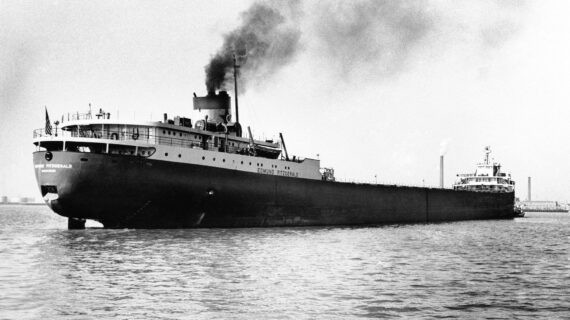


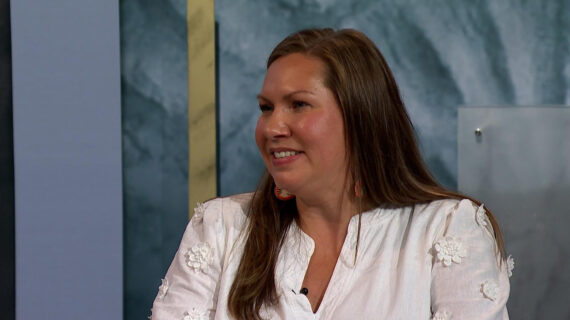
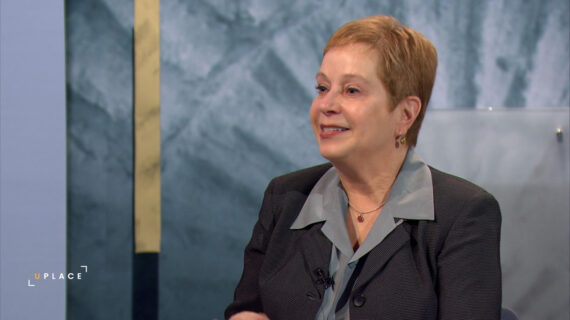

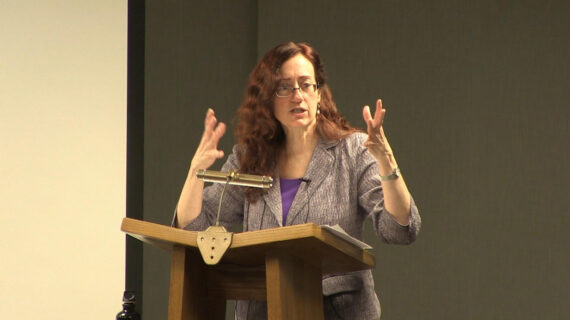

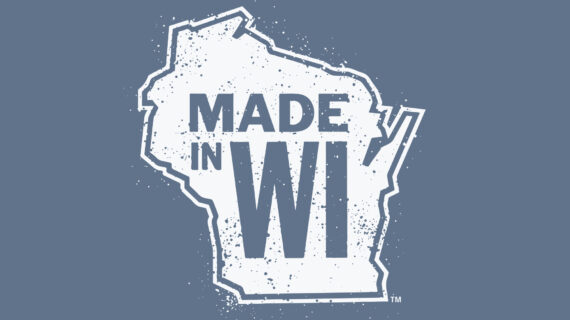

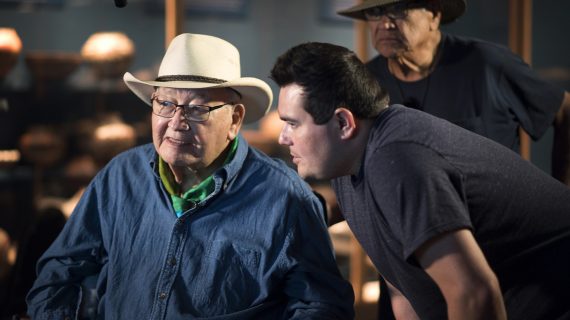


Follow Us